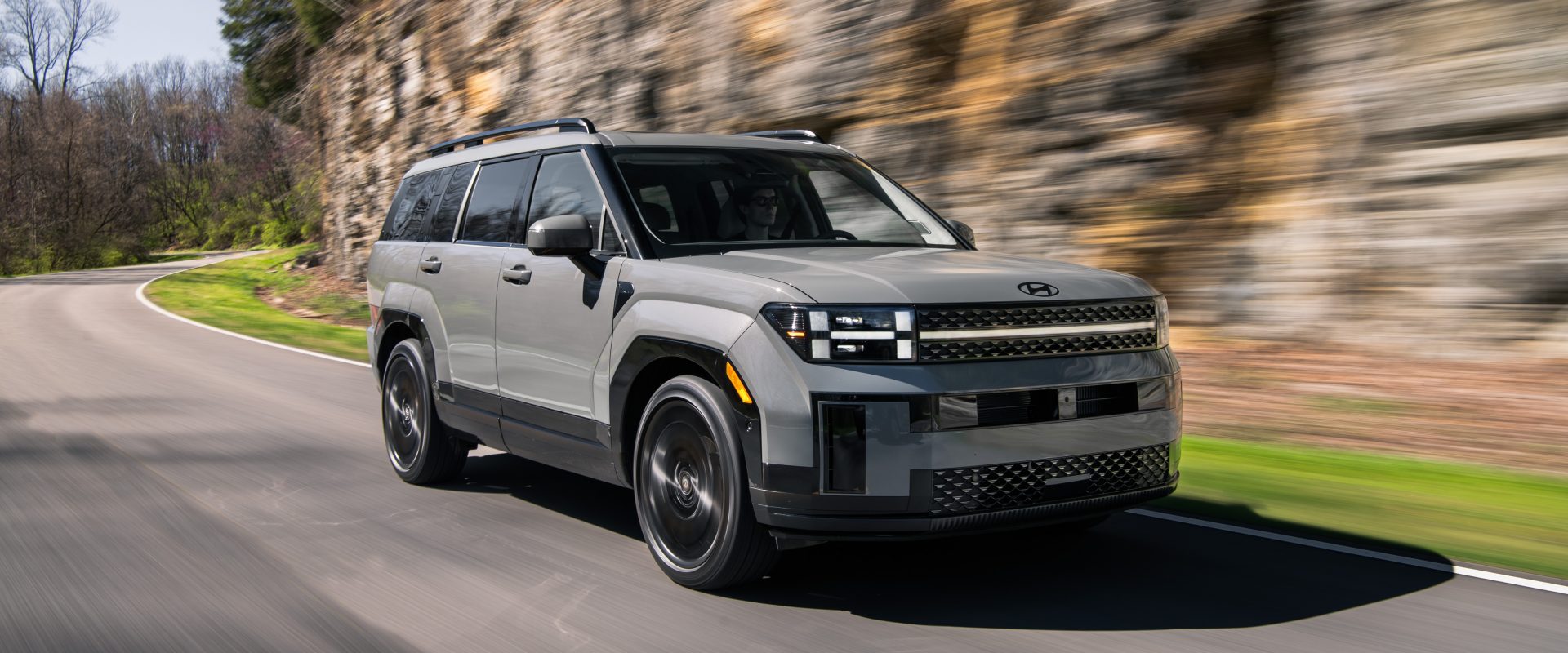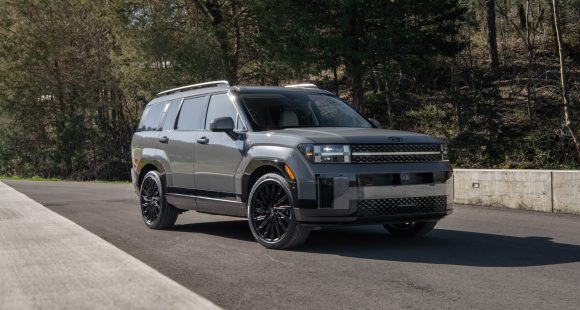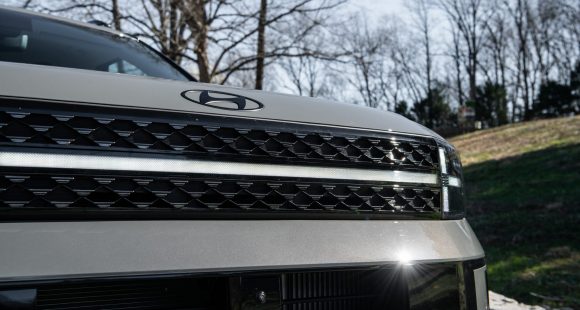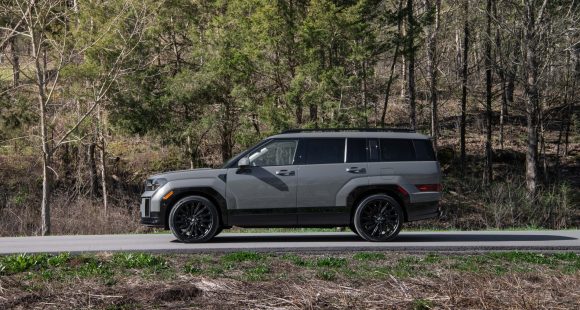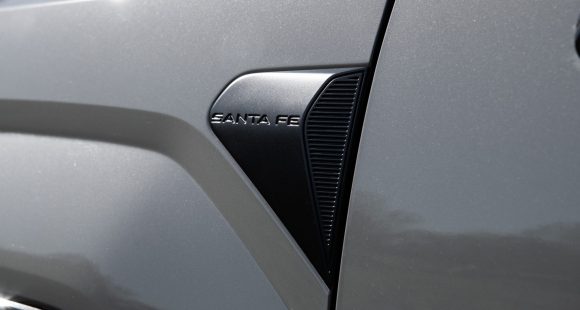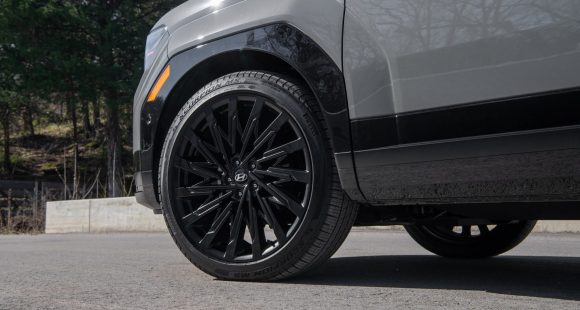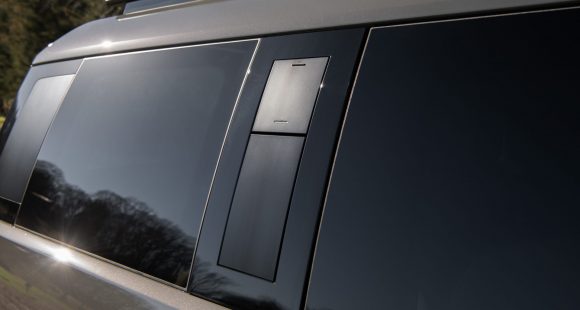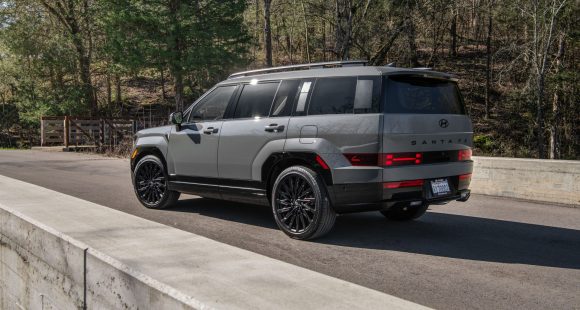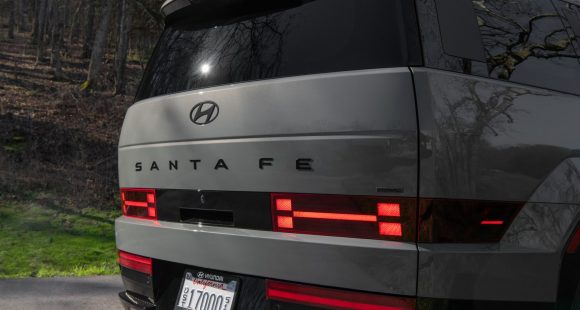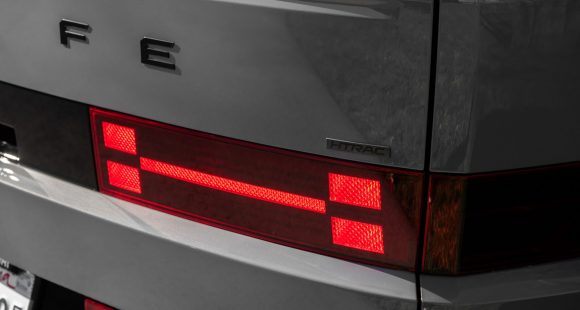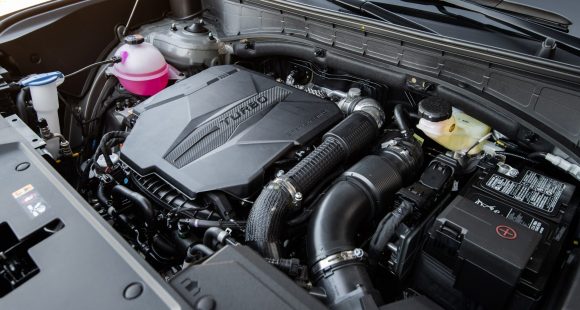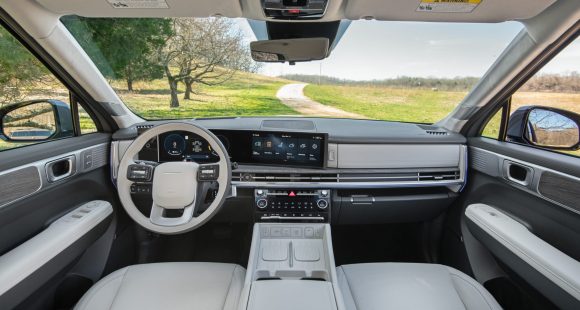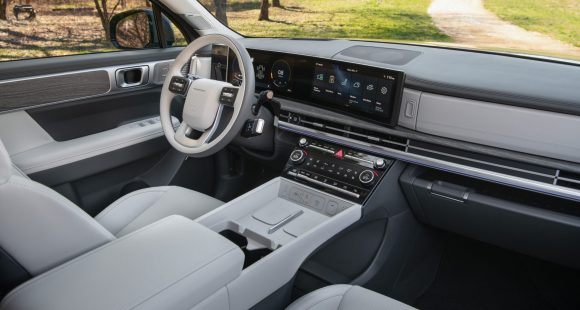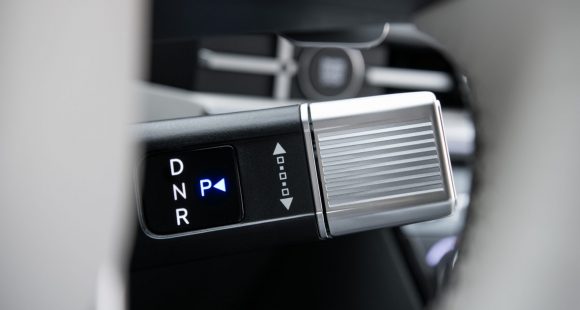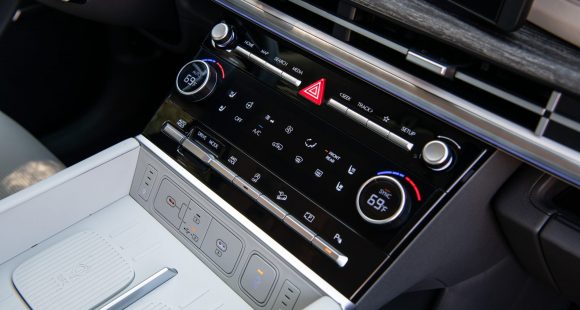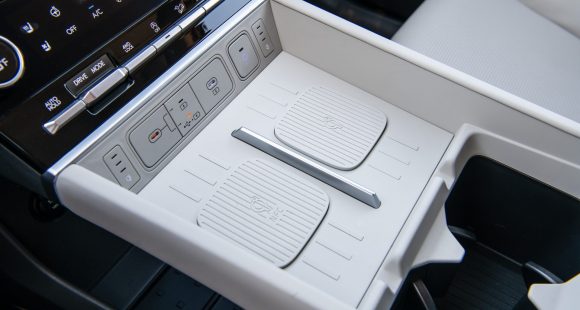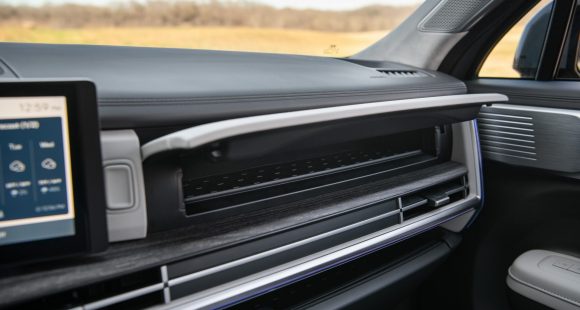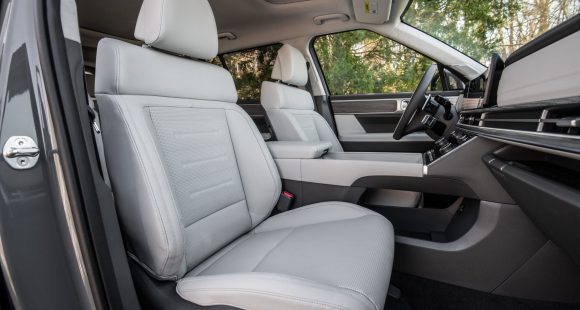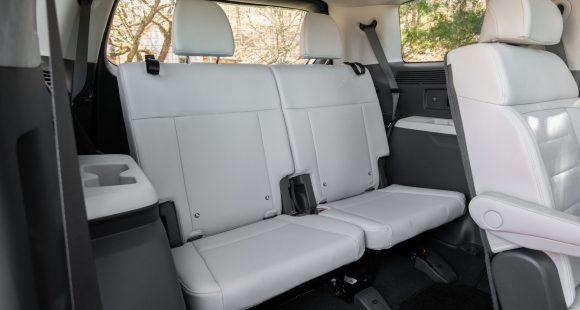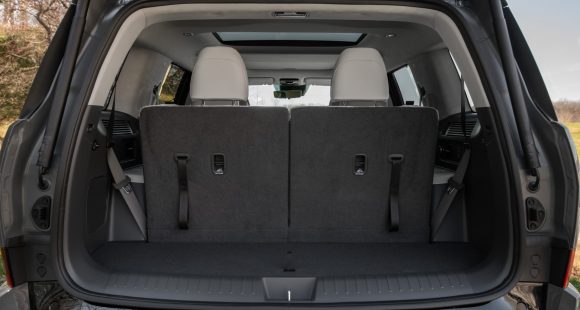2010 Lincoln MKT
The new management at Ford has pledged to rebuild Lincoln to its former glory as a top-flight luxury brand. Given how far down Lincoln’s status has fallen, that will be no small feat. But, Lincoln is making progress. On the heels of the well received MKS sedan comes this MKT, their first full size crossover utility. So, let’s see if the MKT is indeed another step in the right direction.
The three-row 2010 Lincoln MKT takes its showroom place one slot above the midsize, two-row MKX crossover. First seen as a concept at the 2008 North American International Auto Show, the MKT is a decidedly luxurious people-mover that still targets common family concerns. But, being an upscale CUV, it also boasts a lot of technology.
Sharing a platform with the capable Ford Flex, the MKT is the first ground-up vehicle using Lincoln’s latest design language. Still, at first glance, the MKT takes on a lumbering and overstated appearance, with its overdone reincarnation of the classic Lincoln Zephyr grille. Adaptive HID headlights are standard. The look is much improved in profile with far more flow and show than the boxy Flex. Well-sculpted body surfaces and large 19 or 20-inch wheels give the MKT a truly premium image. Likewise, the brawny rear end with roof spoiler, jewel-like taillights, and dual chrome exhausts.
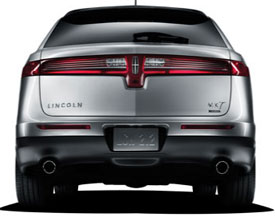 Securicode keyless entry opens a modern and inviting cabin that seats six or seven. Handsome wood trim and upscale amenities abound. Gauges and controls are smart, sophisticated, but more intuitive than import rivals. Deeply padded, leather-trimmed 12-way power front seating includes heating, cooling, and driver’s side memory. Optional is adaptive cruise with collision warning, and Active Park Assist. Rather than radar, it uses ultrasonic sensors to allow hands-free parallel parking. It’s the easiest to use self-park system yet.
Securicode keyless entry opens a modern and inviting cabin that seats six or seven. Handsome wood trim and upscale amenities abound. Gauges and controls are smart, sophisticated, but more intuitive than import rivals. Deeply padded, leather-trimmed 12-way power front seating includes heating, cooling, and driver’s side memory. Optional is adaptive cruise with collision warning, and Active Park Assist. Rather than radar, it uses ultrasonic sensors to allow hands-free parallel parking. It’s the easiest to use self-park system yet.
Atop the broad center stack is an eight-inch touch screen that displays audio and tri-zone climate controls, as well as standard back-up camera image. The optional nav system has real time traffic, weather, and local gasoline pricing. A 10-speaker hard drive audio system is standard, as is voice-prompted Ford SYNC with new 911 Assist.
Like Flex, the second row has limo-like legroom. Standard is a three-passenger split bench, with a pair of fold-and-tumble heated and cooled bucket seats optional. They allow for an available rear console-mounted refrigerator. The two-person, split-third row bench is tight for adults, but is ideal for children. Raise the standard power liftgate for plenty of cargo room: 39.6 cubic feet behind the second row, and 75.9 cubic feet with all seats down.
Raise the MKT’s hood for a choice of two engines. Standard is Ford’s familiar 3.7-liter V6, with 268 horsepower and 267 pound-feet of torque. Our MKT housed Ford’s new 3.5-liter Ecoboost twin-turbo direct-injected V6. It yields a V8-like 355 horsepower and 350 pound-feet of torque. A front-drive six-speed automatic with manual mode is standard. EcoBoost adds all-wheel drive.
Even with V8 power, Ecoboost also claims V6 fuel economy. Government Fuel Economy Ratings are 16 city/22 highway. Unfortunately, our test loop of 18.7 miles per gallon of regular is the best we could do.  Our MKT’s Energy Impact Score is a pretty high at 19 barrels of oil consumed per year, with a Carbon Footprint that measures 10.2 annual tons of C02. The EcoBoost really showed its stuff at the track: 0 to 60 in only 6.1 seconds—that’s three seconds faster than a Buick Enclave—and the quarter mile in 14.7 seconds at 97 miles per hour.
Our MKT’s Energy Impact Score is a pretty high at 19 barrels of oil consumed per year, with a Carbon Footprint that measures 10.2 annual tons of C02. The EcoBoost really showed its stuff at the track: 0 to 60 in only 6.1 seconds—that’s three seconds faster than a Buick Enclave—and the quarter mile in 14.7 seconds at 97 miles per hour.
We were further blown away by the MKT’s ability to handle its two-and-a-half-ton weight in corners. Armed with electronic stability, traction, and roll control, it doesn’t feel nearly so massive in the midst of a slalom exercise. Yes, there is still some body roll, but it’s less than most vehicles this size. Stopping power comes from four-wheel disc brakes with ABS and Brake Assist. Halts averaged a reasonable 130 feet from 60 to 0. On everyday roads, the MKT provides the comfort and quiet necessary for carting the family around town or away on long road trips.
MKT prices range from $44,995 in front-wheel drive, to $49,995 for all-wheel drive EcoBoost. The 2010 Lincoln MKT is indeed another step in the right direction in restoring the luster of this fabled American luxury brand. The MKT may be Lincoln’s first full-size crossover, but it delivers like a veteran.
Specifications
- Engine: 3.5-Liter Ecoboost Twin-turbo Direct-injected V6
- Horsepower: 355
- Torque: 350 Lb Feet
- 0-60 MPH: 6.1 Seconds
- 1/4 Mile: 14.7 Seconds @ 97 MPH
- 60-0 MPH: 130 Feet
- EPA: 16 MPG City/ 22 MPG Highway
- Mixed Loop: 18.7 MPG
- Energy Impact: 19.0 Barrels Oil/Yr
- CO2 Emissions: 10.2 Tons/Yr
2024 Hyundai Santa Fe
Hyundai’s Santa Fe Aims For Land Rover
The Hyundai Santa Fe has been through many changes during the four generations and 23 years that it’s been sold here in the U.S., but none more dramatic than what is being offered for 2024. This fifth-gen Santa Fe is certainly bigger and definitely boxier, but is it a better Santa Fe?
This 2024 Hyundai Santa Fe is indeed a major departure from the wide-mouth, chrome-clad, swoopy-styled midsize five-passenger utility that we’ve known for the last 5 years, and it brings some other big changes with it.
The look is now more slab-sided, slimmed-down, and off-road inspired; drawing comparisons to Land Rover from just about everyone we encountered. The wheelbase has been extended by almost 2 inches, which adds to interior space; so much so that a third row of seating is now once again standard in the Santa Fe. Like many major departures when it comes to styling, time will tell how well it ages, or if there will be another big swing next time around. Many on our staff were not fans of the 21-inch wheels that come with the top Calligraphy trim; and it does appear like they ran out of ideas when they got to the back and called it a day.
But that flat tailgate is 6 inches wider than the previous gen, allowing for very-much minivan-like access to the cargo area, which Hyundai says is the launchpad for adventures, no longer just a simple cargo bay. There’s room for 14.6 cu-ft of adventure gear, or just groceries, behind the third row, 40.5 cu-ft behind the second row, and a max of 79.6 cu-ft with all seatbacks folded. And if you can’t fit everything back there, Hyundai has integrated a cool grab handle into the C-pillar for helping you load stuff up top.
The cockpit of this adventure vehicle feels much more like a luxury car than a rugged utility. Maybe that’s the Land Rover influence again. But really, it’s mostly on-brand from what we’ve been seeing from Hyundai lately. That’s especially the case when you escalate things to top Calligraphy trim. Its $12,500 over base and comes with features such as quilted Nappa leather seats, Eco-suede materials, dual wireless phone chargers, a sweeping panoramic curved dual screen display that we’re more accustomed to seeing in Genesis, with sturdy captain’ chairs with lots of adjustments in the second row. Two-place seating in the standard third row means a capacity of six; lesser trims come with a second-row bench upping that number to seven.
The cockpit of this adventure vehicle feels much more like a luxury car than a rugged utility.
The 2.5-liter I4 turbocharged engine returns, but now as the standard powertrain, getting slightly detuned to 277 horsepower but with the same 311 lb-ft of torque as last year. All-wheel drive is an $1,800 option for all trims except in the off-road inspired XRT where it is included. A 231-horsepower Hybrid is optional. This is a lot of vehicle for the standard four-cylinder to move, even if it is turbocharged, but that seems to be the way things are heading these days. So, we’ll just have to accept the tepid jog to 60 of 7.0 seconds. To be fair, it’s still plenty quick for running errands with the family.
It uses a dual-clutch eight-speed transmission rather than a traditional automatic. Gear changes were smooth with some power drop with each upshift. We reached 95 mph at the end of the quarter-mile in 15.4 seconds. This bigger Santa Fe felt very stable at speed going down the track. It was more in its element in our handling course, with sharp and responsive steering, great balance, and lots of feedback; all making it easy to keep momentum going through the cones. We saw plenty of nosedive with a soft brake pedal in our panic braking runs. But results were quite good, with stops from 60 averaging 111 feet.
Government Fuel Economy Ratings with all-wheel drive are 20 City, 28 Highway, and 23 Combined; rounding up our 22.6 mpg of Regular average puts it right on.
An ever increasingly wide bandwidth of options has the base Santa Fe starting at $35,365 and reaching all the way up to $47,915 for top Calligraphy; the Hybrid is available in SEL, Limited, and Calligraphy trims only.
Love it or hate it, the 2024 Hyundai Santa Fe has made a bold step in style, but it still has plenty of substance to back it up. So yes, it is a better Santa Fe, and now with a definite upmarket push, it lands as an even greater mid-size utility value.
Specifications
As Tested
- Engine: 2.5-liter I4 Turbo
- Transmission: 8-speed dual-clutch auto
- Horsepower: 277
- Torque: 311 lb-ft
- EPA: 20 City | 28 Highway | 23 Combined
- 0-60 mph: 7.0 seconds
- 1/4 Mile: 15.4 seconds at 95 mph
- Braking, 60-0 (avg): 111 feet
- MW Fuel Economy: 22.6 MPG (Regular)







